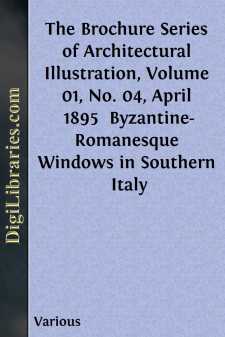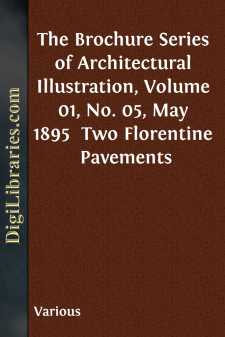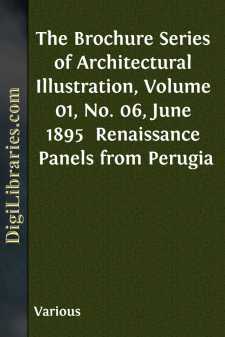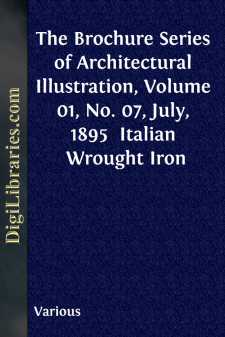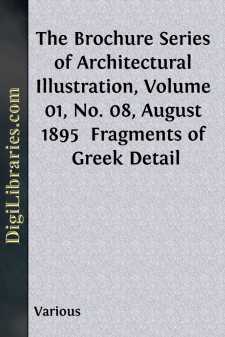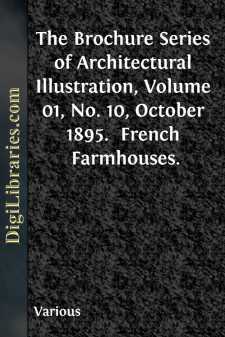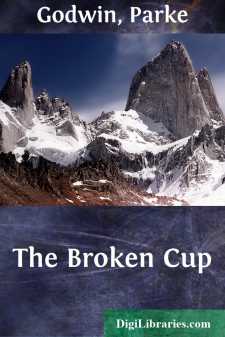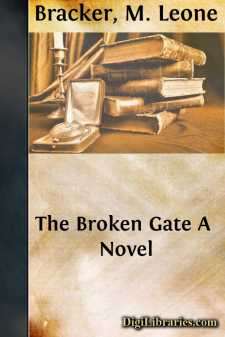Categories
- Antiques & Collectibles 13
- Architecture 36
- Art 48
- Bibles 22
- Biography & Autobiography 813
- Body, Mind & Spirit 142
- Business & Economics 28
- Children's Books 13
- Children's Fiction 10
- Computers 4
- Cooking 94
- Crafts & Hobbies 4
- Drama 346
- Education 46
- Family & Relationships 57
- Fiction 11828
- Games 19
- Gardening 17
- Health & Fitness 34
- History 1377
- House & Home 1
- Humor 147
- Juvenile Fiction 1873
- Juvenile Nonfiction 202
- Language Arts & Disciplines 88
- Law 16
- Literary Collections 686
- Literary Criticism 179
- Mathematics 13
- Medical 41
- Music 40
- Nature 179
- Non-Classifiable 1768
- Performing Arts 7
- Periodicals 1453
- Philosophy 64
- Photography 2
- Poetry 896
- Political Science 203
- Psychology 42
- Reference 154
- Religion 513
- Science 126
- Self-Help 84
- Social Science 81
- Sports & Recreation 34
- Study Aids 3
- Technology & Engineering 59
- Transportation 23
- Travel 463
- True Crime 29
Sort by:
by:
Various
BYZANTINE-ROMANESQUE WINDOWS IN SOUTHERN ITALY. The collection of photographs from which the plates in this and the February number were selected was only recently made under the direction of Signor Boni, an official of the Italian government, charged with the care and restoration of historic monuments. The province of Apulia has been so little invaded by the march of modern improvement, and its...
more...
by:
Various
TWO FLORENTINE PAVEMENTS. The church of San Miniato al Monte, just outside the walls southeast of Florence, and the Baptistery, or church of San Giovanni Battista, in Florence, are among the finest examples of the Tuscan Romanesque style, and both probably date from about the same time—the early part of the twelfth century—although the date of San Miniato has until recently been referred several...
more...
by:
Various
RENAISSANCE PANELS FROM PERUGIA. The carved walnut panels from the choir stalls of the Church of San Pietro de' Casinense in Perugia, designed by Stefano da Bergamo in 1535, which are given as illustrations in this number, are excellent examples of the ornament of the later period of the Italian Renaissance. This form of ornament was first used in flat painted panels upon pilasters, such as the...
more...
by:
Various
ITALIAN WROUGHT IRON. The wrought iron of the middle ages, and of the time of the Renaissance, and even down to the last century, in Italy, France, and Germany showed, in the crudest examples, the principal virtues of all true decorative art. The reason is not far to seek. The difficulties in the way of working the material with ease imposed certain limitations in design and execution which could not...
more...
by:
Various
FRAGMENTS OF GREEK DETAIL. The Art of Greece during the fifth century, B.C., was developed in an amazingly short time from a condition of almost archaic rudeness to that of the greatest perfection which the world has ever seen. At the close of the Persian wars the Athenians, under Pericles, began rebuilding their city and perfecting themselves in all the arts of civilization, and their progress in the...
more...
by:
Various
FRENCH FARMHOUSES. As it is the purpose of THE BROCHURE SERIES to cover as wide a field as possible in choice of subject matter for its illustrations, and at the same time hold rigidly to the idea of furnishing only what will be useful to its subscribers, it has seemed desirable to present something a little nearer our everyday life than the Italian work which has thus far formed the greater part of...
more...
by:
Various
THE COUNTRY HOUSES OF NORMANDY. THE houses chosen for illustration in this number are of different types, of different dates, built for men of different stations in life, and are constructed of different materials. They are, however, all in the province of Normandy, in northern France, and they are all situated outside the towns; further than this it may not be well to go in attempting to classify them...
more...
by:
Parke Godwin
NAPOULE, it is true, is only a very little place on the bay of Cannes; yet it is pretty well known through all Provence. It lies in the shade of lofty evergreen palms, and darker orange trees; but that alone would not make it renowned. Still they say that there are grown the most luscious grapes, the sweetest roses, and the handsomest girls. I don't know but it is so; in the mean time I believe it...
more...
by:
M. Leone Bracker
THE HOMECOMING OF DIEUDONNÉ LANE "Eejit! My son John! Whip ary man in Jackson County! Whoop! Come along! Who'll fight old Eph Adamson?" The populace of Spring Valley, largely assembled in the shade of the awnings which served as shelter against an ardent June sun, remained cold to the foregoing challenge. It had been repeated more than once by a stout, middle-aged man in shirt sleeves and...
more...
CHAPTER I THE BREAKING OF THE ROAD It was the Road which caused the trouble. It usually is the road. That and a reigning prince who was declared by his uncle secretly to have sold his country to the British, and a half-crazed priest from out beyond the borders of Afghanistan, who sat on a slab of stone by the river-bank and preached a djehad. But above all it was the road—Linforth's road. It...
more...


